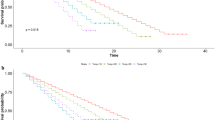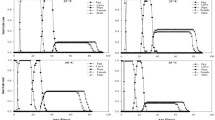Abstract
A minute pirate bug, Amphiareus constrictus (Stål) (Hemiptera: Anthocoridae), the biology of which has been less studied, was successfully reared in the laboratory for more than 20 generations. Studies were conducted to understand its biology, life table parameters, and predatory potential. Besides the adult, the egg and all five nymphal instars are described with live images, which can serve as additional characters for identification. The biological parameters were studied at different temperatures. Rearing temperatures of 25 and 30°C were found to be suitable for hatching and nymphal survival to adult stage (88.5 and 75%, respectively). Life table parameters like net reproductive rate (R0), precise intrinsic rate of increase (rm), finite rate of increase (λ) and hypothetical F2 females were higher at 25°C. A nymph could consume a total of 32.8 ± 1.8 Corcyra cephalonica Stainton eggs. Male and female adult consumed a total of 179.0 ± 15.6 and 388.5 ± 58.6 C. cephalonica eggs, respectively. The data generated through studies on biology, fertility, and predatory potential led to the standardization of a simple production protocol for A. constrictus utilizing the eggs of the rice moth C. cephalonica. Predatory potential studies on Tuta absoluta (Meyrick) indicated that a nymph could consume 154.8 eggs during nymphal duration. Male and female adults could consume 1280.5 and 1435 eggs, respectively. The mass-reared A. constrictus can be field evaluated against the tomato pinworm TT absoluta and the brown plant hopper Nilaparvata lugens Stål.


Similar content being viewed by others
References
Arnold CY (1959) The determination and significance of the base temperature in a linear heat unit system. Proc Am Soc Horti Sci 74:430–445
Ballal CR, Singh SP, Poorani J (2003) Biology and rearing requirements of an anthocorid predator, Blaptostethus pallescens Poppius (Heteroptera: Anthocoridae). J Biol Control 17:29–33
Ballal CR, Gupta T, Joshi S (2012) Effect of different laboratory hosts on the fertility table parameters and continuous rearing of an anthocorid predator Orius tantillus (Motsch.). Pest Manage Hort Ecosyst 18:24–28
Birch LC (1948) The intrinsic rate of natural increase of an insect population. J Anim Ecol 17:15–26
Brenner GJ, Lattin JD (2001) Notes on three species of Anthocoridae (Hemiptera: Heteroptera) from Hawaii, including the first record of Buchananiella continua (White). Proc Entomol Soc Wash 103:386–388
Brito JP, Vacari AM, Thuler RT, De Bortoli SA (2009) Aspectos biológicos de Orius insidiosus (Say, 1832) predando ovos de Plutella xylostella (L., 1758) e Anagasta kuehniella (Zeller, 1879). Arq Instit Biol 76(4):627–633
Carpintero DL (2002) Minute pirate bugs (Anthocoridae and Lyctocoridae). In: Panizzi AR, Grazia J (eds) True bugs (Heteroptera) of the neotropics. Springer, pp 217–236
Cassis G, Gross GF (1995) Hemiptera: Heteroptera (Coleorrhyncha to Cimicomorpha). In: WWK H, Maynard GV (eds) Zoological Catalogue of Australia, vol 27. CSIRO, Melbourne, p 3A 506 pp
Cobben RH (1968) Part 1. Eggs, architecture of the shell, gross embryology and eclosion. In: Evolutionary trends in Heteroptera. Centre for Agricultural Publishing and Documentation, Wageningen, 475 pp
Distant WL (1906) Order Rhynchota. Suborder Heteroptera. Family Anthocoridae. In: Bingham CT (ed) The Fauna of British India including Ceylon and Burma, vol 3. Taylor and Francis, London, pp 1–10
Distant WL (1910) Order Rhynchota. Suborder Heteroptera. Family Anthocoridae. In: Bingham CT (ed) The fauna of British India including Ceylon and Burma, vol 5. Taylor and Francis, London, pp 295–309
Gontijo LM, Celestino D, Queiroz OS, Guedes RNC, Picanco MC (2015) Impacts of azadirachtin and chlorantraniliprole on developmental stages of pirate bug predators (Hemiptera: Anthocoridae) of the tomato pinworm Tuta absoluta (Lepidoptera: Gelechiidae). Fla Entomol 98:59–64
Henry TJ (1988) Family Anthocoridae Fieber, 1837. The minute flower bugs. In: Henry TJ, Froeschner RC (eds) Catalog of the Heteroptera, or true bugs, of Canada and the continental United States. E.J. Brill, Leiden, pp 12–28 958 pp
Henry TJ, Wheeler AG Jr, Steiner WE Jr (2008) First North American records of Amphiareus obscuriceps (Poppius) (Hemiptera: Heteroptera: Anthocoridae), with a discussion of dead-leaf microhabitats. Proc Entomol Soc Wash 110:402–416
Lattin JD, Lewis T (2001) Amphiareus constrictus (Stål) (Hemiptera: Heteroptera: Anthocoridae) from California: clarification of previous record and citation. Proc Entomol Soc Wash 103:334–336
Manjunath TM, Rai PS, Gowda G (1978) Parasites and predators of Nilaparvata lugens in India. PANS 24:265–269
Morris RF, Fulton WC (1970) Models for the development and survival of Hyphantriacunea in relation to temperature and humidity. Mem Entomol Soc Canada 70:1–60
Muraleedharan N, Ananthakrishnan TN (1974) The genus Buchananiella Reuter from India with description of a new species (Heteroptera: Anthocoridae). Orient Insects 8:33–35
Muraleedharan N, Ananthakrishnan TN (1978) On the tribes Cardiastethini and Almeidini from South India (Hemiptera: Anthocoridae). Bull Zool Surv India 1:55–70
Nieto JAA, Rincon FC, Caicedo DR (2016) Life table of Orius insidiosus (Hemiptera: Anthocoridae) feeding on Sitotroga cerealella (Lepidoptera: Gelechiidae) eggs. Rev Fac Agron 69(1):7773–7782
Pereira RR, Picanco MC, Santana PA Jr, Moreira SS, Guedes RNC, Correa AS (2014) Insecticide toxicity and walking response of three pirate bug predators on the tomato leaf miner Tuta absoluta. Agric For Entomol 16:293–301
Péricart J (1996) Family Anthocoridae Fieber, 1836- flower bugs, minute pirate bugs. In: Aukema B, Rieger C (eds) Catalogue of the Heteroptera of the Palaearctic Region.Cimicomorpha I, vol 2. Netherlands Entomological Society, Amsterdam, pp 108–140
Queiroz OS, Ramos RS, Gontijo LM, Picanço MC (2015) Functional response of three species of predatory pirate bugs attacking eggs of Tuta absoluta (Lepidoptera: Gelechiidae). Environ Entomol 44:246–251
Russo A, Cocuzza GE, Vasta MC (2004) Life tables of Xylocoris flavipes (Hemiptera: Anthocoridae) feeding on Tribolium castaneum (Coleoptera:Tenebrionidae). J Stored Prod Res 40:103–112
Salehi Z, Yarahmadi F, Rasekh A, Sohani NZ (2016) Functional responses of Orius albidipennis Reuter (Hemiptera, Anthocoridae) to Tuta absoluta Meyrick (Lepidoptera, Gelechiidae) on two tomato cultivars with different leaf morphological characteristics. Entomol Gen 36(2):127–136. https://doi.org/10.1127/entomologia/2016/0339
Sands WA (1957) The immature stages of some British Anthocoridae (Hemiptera). Trans R Entomol Soc London 109:295–310
SAS Institute Inc. (2011). Base SAS® 9.3 Procedures Guide. Cary, NC: SAS Institute Inc.
Schuldiner-Harpaz T, Coll M (2012) Identification of Orius (Hetroptera: Anthocoridae) females based on egg operculum structure. J Econ Entomol 105:1520–1523
Singh SP, Jalali SK, Bhumannavar BS, Bakthavatsalam N, Pushpalatha NA (1994a) Production and use of Chrysopid predators. Project Directorate of Biological Control, Bangalore, Tech Bull No 10, 14pp
Singh SP, Jalali SK, Bhumannavar BS, Bakthavatsalam N, Pushpalatha NA (1994b) Production and use of trichogrammatid egg parasitoids. Project Directorate of Biological Control, Bangalore, Tech Bull No. 11, 16 pp
Southwood TRE (1956) The structure of eggs of the terrestrial heteroptera and its relationship to the classification of the group. Trans R Entomol Soc London 108:163–221
SPSS Inc. Released 2009. PASW statistics for windows, version 18.0. SPSS Inc., Chicago
Stål C (1860) Bidrag till Rio Janeiro-traktens Hemiptera-fauna, 1. Kungliga Svenska Vetenskaps Akademiens Handlinger 2:1–84 (In Swedish)
Steiner WE Jr (1984) A review of the biology of phalacrid beetles (Coleoptera). In: Wheeler Q, Black M (eds) Fungus insect relationships: perspectives in ecology and evolution. Columbia University Press, New York, pp 424–445
Tommasini MG, Van Lenteren JC, Burgio G (2004) Biological traits and predation capacity of four Orius species on two prey species. Bull Insectol 57:79–93
Yamada K (2008) Taxonomy of the genus Amphiareus (Heteroptera: Anthocoridae) in Southeast Asia. Eur J Entomol 105:909–916
Yamada K, Hirowatari T (2003) Japanese species of the genus Amphiareus Distant (Heteroptera: Anthocoridae), with descriptions of two new species. Entomol Sci 6:289–300
Yamada K, Hirowatari T (2011) Distributional records of seven flower bugs (Heteroptera: Lyctocoridae, Anthocoridae) from Japan. Rostria 53:63–66
Yano E, Watanabe K, Yara K (2002) Life history parameters of Orius sauteri (Poppius) (Het., Anthocoridae) reared on Ephestia kuehniella eggs and the minimum amount of the diet for rearing individuals. J Appl Ent 126:389–394
Zimmerman EG (1984) Insects of Hawaii. Heteroptera, vol 3. University of Hawaii Press, Honolulu 255 pp
Acknowledgements
The authors are grateful to Dr. V. V. Ramamurthy, National Co-ordinator, Network Project on Insect Bio-systematics, Division of Entomology, IARI, New Delhi, India, for the EM facilities provided and to Dr. K. Yamada, Tokushima Prefectural Museum, Tokushima, Japan, for taxonomic identification of Amphiareus constrictus. The authors are also thankful to Mr. Jogesha for technical assistance and Mr. Raja for continuous maintenance of the Amphiareus constrictus culture.
Author information
Authors and Affiliations
Contributions
CRB and SJ conceived the study. CRB, RV, and SJ performed experiments and analyzed the data. CRB and RV wrote the manuscript. All authors read and approved the manuscript.
Corresponding author
Additional information
Edited by Madelaine Venzon – UFL
Publisher’s Note
Springer Nature remains neutral with regard to jurisdictional claims in published maps and institutional affiliations.
Rights and permissions
About this article
Cite this article
Ballal, C.R., Varshney, R. & Joshi, S. Morphology, Biology and Predation Capacity of Amphiareus constrictus (Stål) (Hemiptera: Anthocoridae). Neotrop Entomol 48, 668–677 (2019). https://doi.org/10.1007/s13744-019-00684-7
Received:
Accepted:
Published:
Issue Date:
DOI: https://doi.org/10.1007/s13744-019-00684-7




